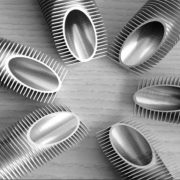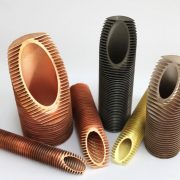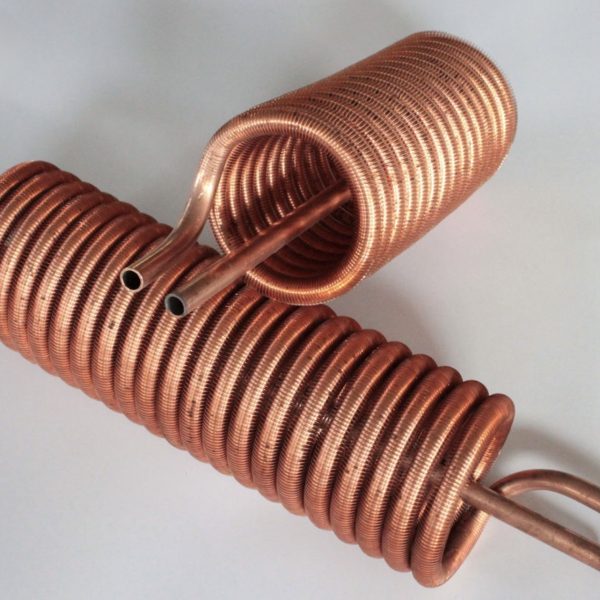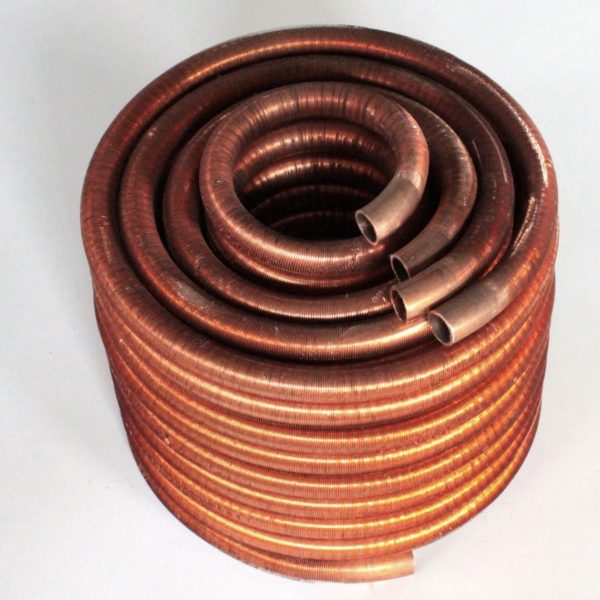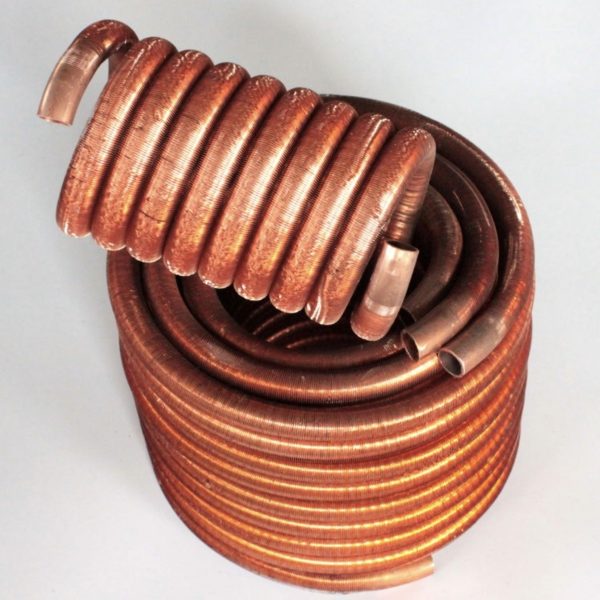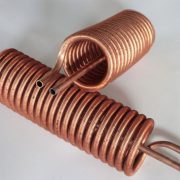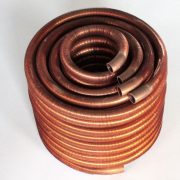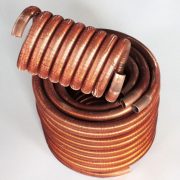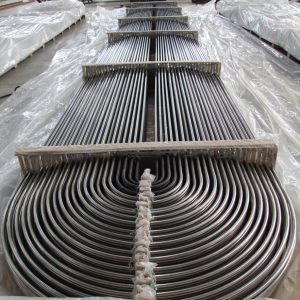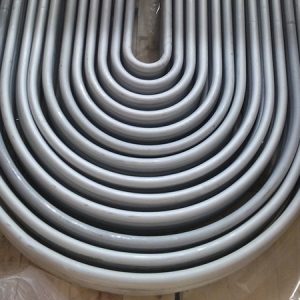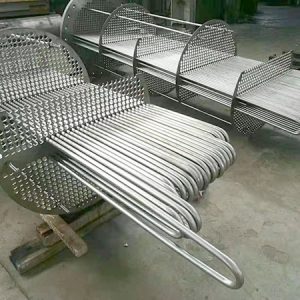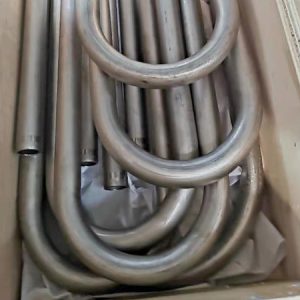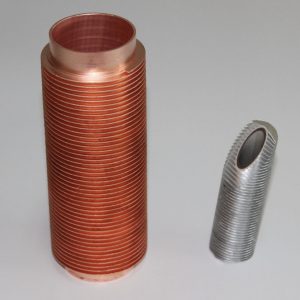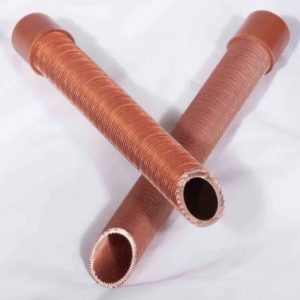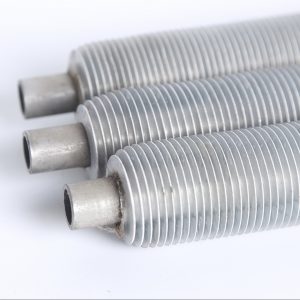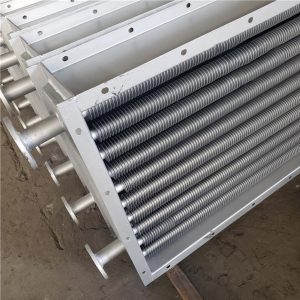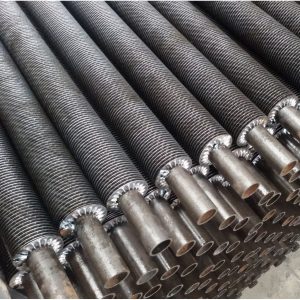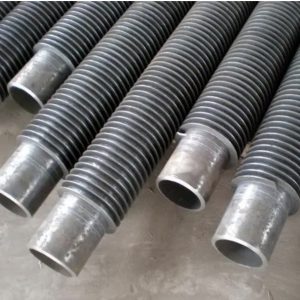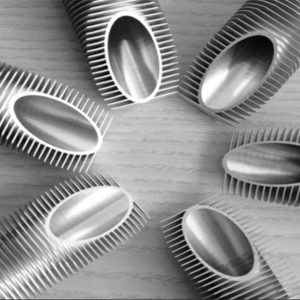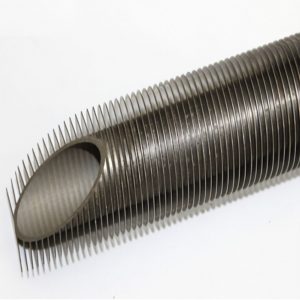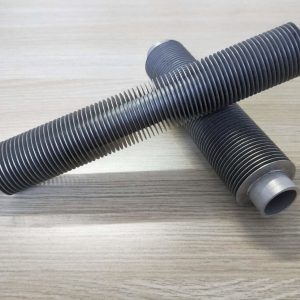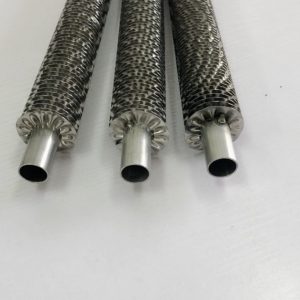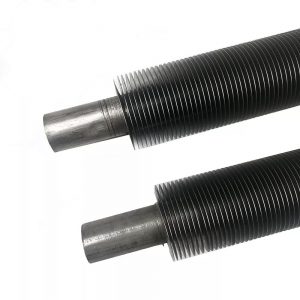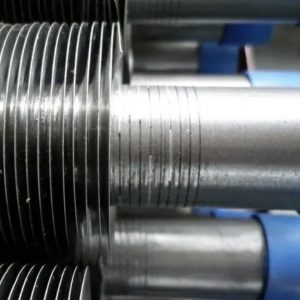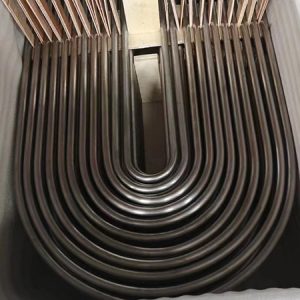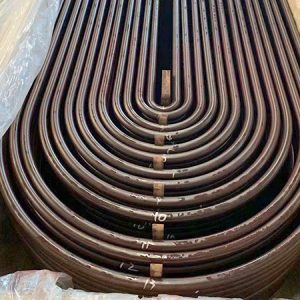Coiled Copper Fin Tube
Copper fin coils are also special coils that Grand provide. These coils don’t have a bi-metallic bond usually found on standard coils and have a copper wavy fin pattern bonded to the copper tubes.
These coils are very reliable heat exchangers as they are required and can operate for air conditioners in harsh coastal areas and other highly corrosive surroundings because the coils have higher coastal corrosion durability. The coils match this type of environment because the bi-metallic construction is not present, and copper has a natural protective film and a mono-metal bond attaching the tube and fin. They have superb thermal conductivity, resistance and strength compared to aluminium.
- Description
- Product Details
- Fin tube reference
- Inquiry
Copper fin coils are also special coils that Grand provide. These coils don’t have a bi-metallic bond usually found on standard coils and have a copper wavy fin pattern bonded to the copper tubes.
These coils are very reliable heat exchangers as they are required and can operate for air conditioners in harsh coastal areas and other highly corrosive surroundings because the coils have higher coastal corrosion durability. The coils match this type of environment because the bi-metallic construction is not present, and copper has a natural protective film and a mono-metal bond attaching the tube and fin. They have superb thermal conductivity, resistance and strength compared to aluminium.
What’s good about using copper for these special coils is that it can reduce energy consumption due to its biofouling resistance, corrosion resistance, antimicrobial properties, ease of fabricating and joining, and less need for maintenance for cleaning coils.
If the copper fins are uncoated, they are no longer suitable for industrial applications. It is because copper can be very vulnerable to contaminants and will not have a long coil life.
Copper is a metal element, and pure copper is a soft metal. The surface is reddish orange with metallic luster when it is just cut open, and its simple substance is purple-red. Good ductility, high thermal conductivity and electrical conductivity, so it is the most commonly used material in cables and electrical and electronic components.
It can also be used as a building material and can be composed of many alloys. Copper alloys have excellent mechanical properties and low electrical resistivity. The most important ones are bronze and brass. In addition, copper is also a durable metal that can be recycled multiple times without compromising its mechanical properties.
Copper pipes (also known as red copper pipes) are commonly used in tap water pipes, heating and cooling pipes, and can be used in different environments. Copper pipes combine the advantages of metal and non-metal pipes in cold and hot water systems. Copper pipes are resistant to high temperatures and can be used in a variety of environments. Compared with this, the shortcomings of many other pipe materials are obvious.
For example, the galvanized steel pipes used in residential buildings in the past are very easy to rust. If they are not used for a long time, the tap water will turn yellow and the water flow will become small. In addition, the strength of some materials will decrease rapidly at high temperatures, which may cause unsafe risks when used in hot water pipes. The melting point of copper is as high as 1083 degrees Celsius, and the temperature of the hot water system is negligible for copper pipes.
China Copper Pipe is the best one and is the best connecting pipe. The copper pipe is fire-resistant and heat-resistant, and can maintain its shape and strength under high temperature without aging.
The pressure resistance of copper pipes is several times or even dozens of times that of plastic pipes and aluminum-plastic pipes. It can withstand the highest water pressure in today’s buildings. In the hot water environment, with the extension of service life, the pressure capacity of plastic pipes significantly decreases, and the mechanical properties of copper pipes remain unchanged in all thermal temperature ranges, so their pressure resistance will not decrease, nor there will be aging.
Copper finned tubes manufacturing process
Pipe line——compressing or rolling——strip peeling——washing——pressure test——blast blowing——packaging. The cold machining process of fins provides excellent mechanical resistance , fins are strong and have strong resistance to atmospheric corrosion, etc. The pressure required to extrude the fin from the aluminum sleeve creates an excellent “pressure bond” between the two materials. In addition, the aluminum finned material completely surrounds the metal of the tube, so there is no risk of electrical corrosion at the fin root (between the tube and the fin). All of these advantages ensure the most stable performance over time of all other fin types.
Copper finned tube applications
Copper finned tubes products are widely used in petrochemical, power plant and power plant renovation, air conditioning and refrigeration, boilers, finned tube economizers and air preheaters.
Fin tube reference
Carbon steel fins are available on carbon, stainless steel, or copper tube. Please call for a specific size if not listed

| Type | Description | Base tube O.D. (mm) |
Fin specification (mm) | ||
|---|---|---|---|---|---|
| Fin pitch | Fin height | Fin thick | |||
| Embedded | G-type fin tueb | 16-63 | 2.1-5 | <17 | ~0.4 |
| Extruded | Single metal combined metal | 8-51 | 1.6-10 | <17 | 0.2-0.4 |
| Low fin tube t-type fin tube | 10-38 | 0.6-2 | <1.6 | ~0.3 | |
| Bamboo tube corrugated tube | 16-51 | 8-30 | <2.5 | / | |
| Wound | l/kl/ll type fin tube | 16-63 | 2.1-5 | <17 | ~0.4 |
| String | String fin tube | 25-38 | 2.1-3.5 | <20 | 0.2-0.5 |
| U-type | U-type tube | 16-38 | / | / | / |
| Welding | HF-welding fin tube | 16-219 | 3-25 | 5-30 | 0.8-3 |
| H/HH type fin tube | 25-63 | 8-30 | <200 | 1.5-3.5 | |
| Studed fin tube | 25-219 | 8-30 | 5-35 | φ5-20 | |
According to user needs, we can produce all kinds of steel strip winding finned tube and steel aluminum composite finned tube.
Materials
Carbon steel fins are available on carbon, stainless steel, or copper tube. Please call for a specific size if not listed

We offer you a broad portfolio of materials and can expand our offering at any time to meet your specific needs regarding thermal conductivity, mechanical properties, or corrosion resistance.
- Base tube: Carbon steel, Stainless steel, Copper, Cupro Nickel, Aluminium, Alloy Steel
- Fin: Carbon steel, Stainless steel, Copper, Aluminium
- Rings: Carbon steel, Aluminium, Hot dip galvanizing

